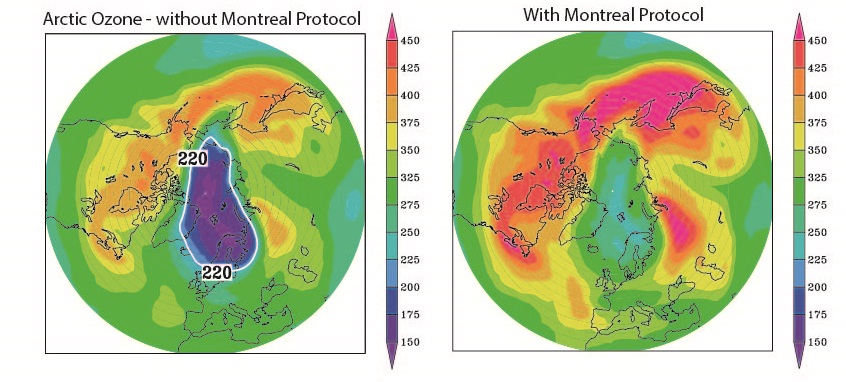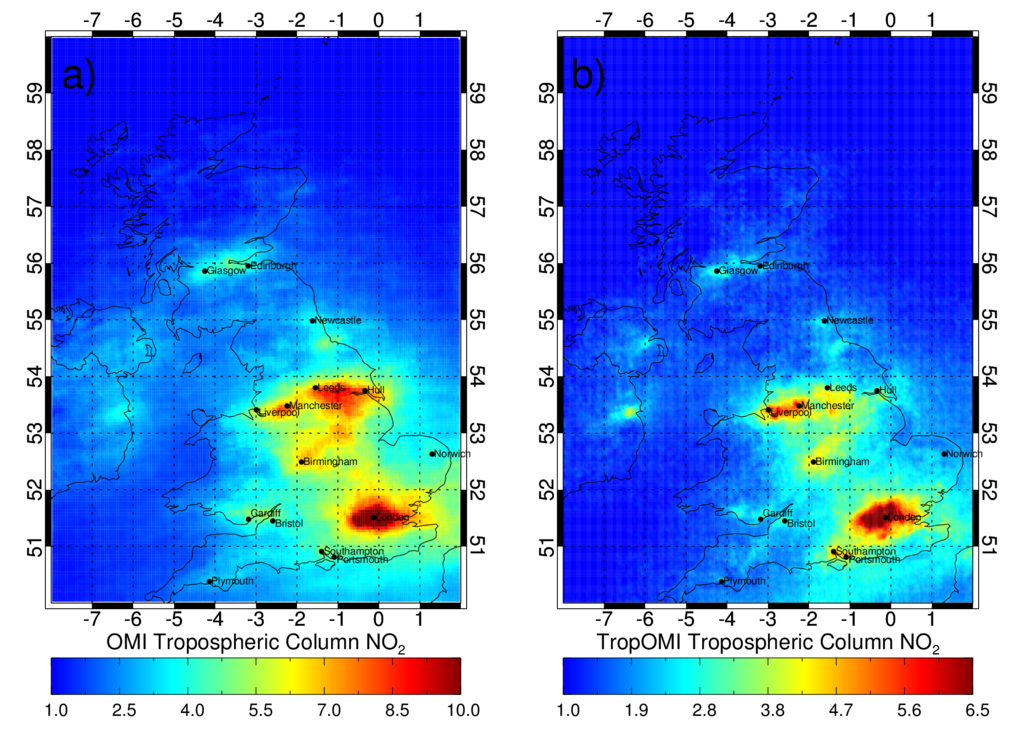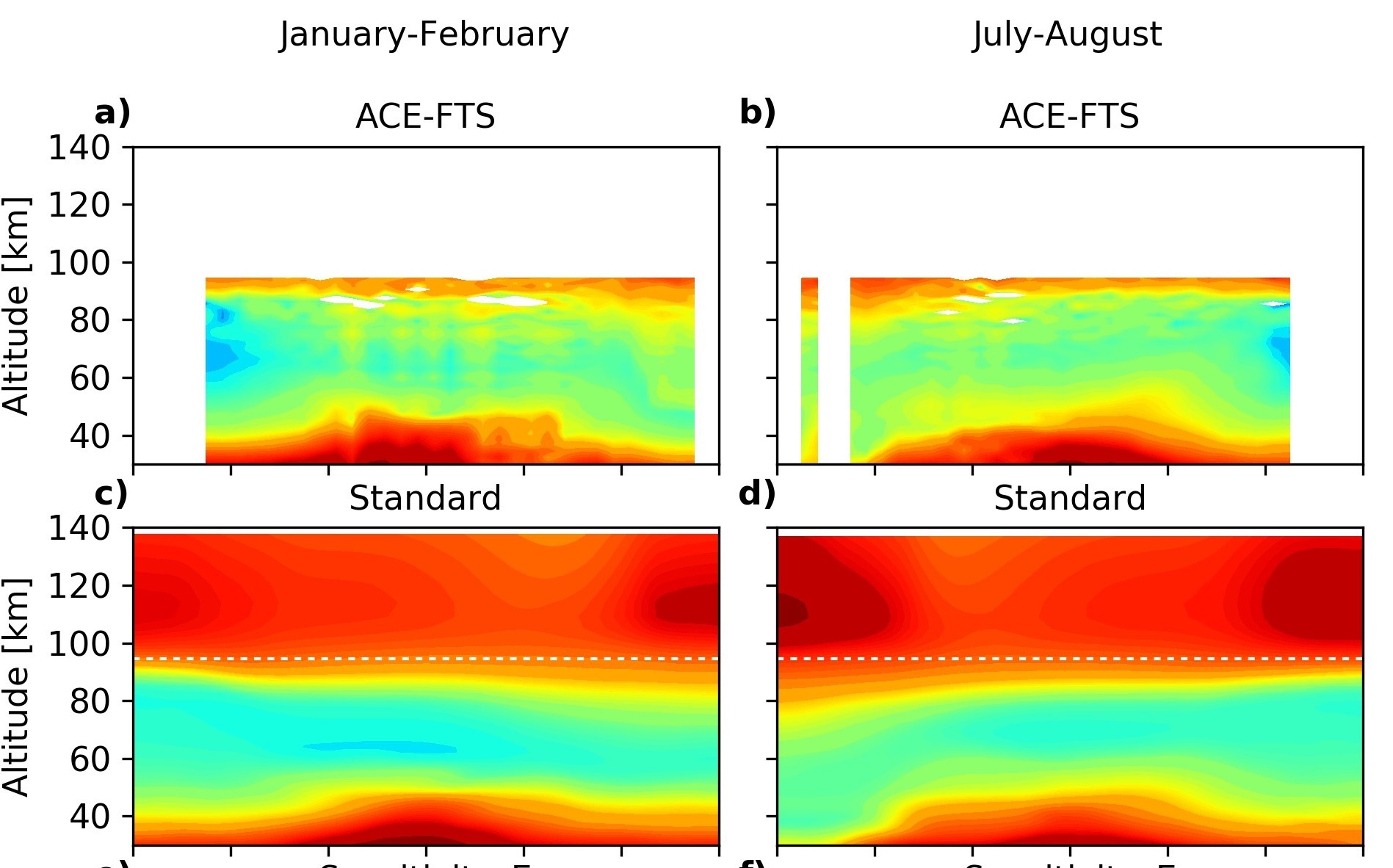Stratospheric Ozone
We study the depletion and recovery of the stratospheric ozone
layer. As well as researching the fundamental processes which
control stratospheric ozone, we use our models to inform
policy makers of the impact of actions taken under the Montreal
Protocol (see figure).

|
|
Air Quality
We use state-of-the art satellite observations of chemistry and aerosols in the
lowest few km of the atmosphere to study air quality. The satellites give a
large-scale view of air quality (see image) which complements observations
made at the surface.

|
Chemistry-Climate Interactions
The two-way coupling between changes in climate and composition are important for
many reasons. Changes in atmospheric composition will affect climate, and changes
in climate will also feedback on, for example, atmospheric chemistry.
We use models and observations to derive the magnitude and distribution of
surface fluxes for greenhouse gases such as methane. Alot of our work also relates
to ozone chemistry-climate interactions in the stratosphere.
|
|
Upper Atmosphere
Metal layers layers in the mesosphere and lower thermosphere (MLT) are produced
by ablating meteors. We use them as tracers to test model chemistry and
transport in this region. The image shows ACE-FTS satellite observations of enhanced
N2O in the MLT and our calculations with a new parameterisation for
this source in a climate model.

|